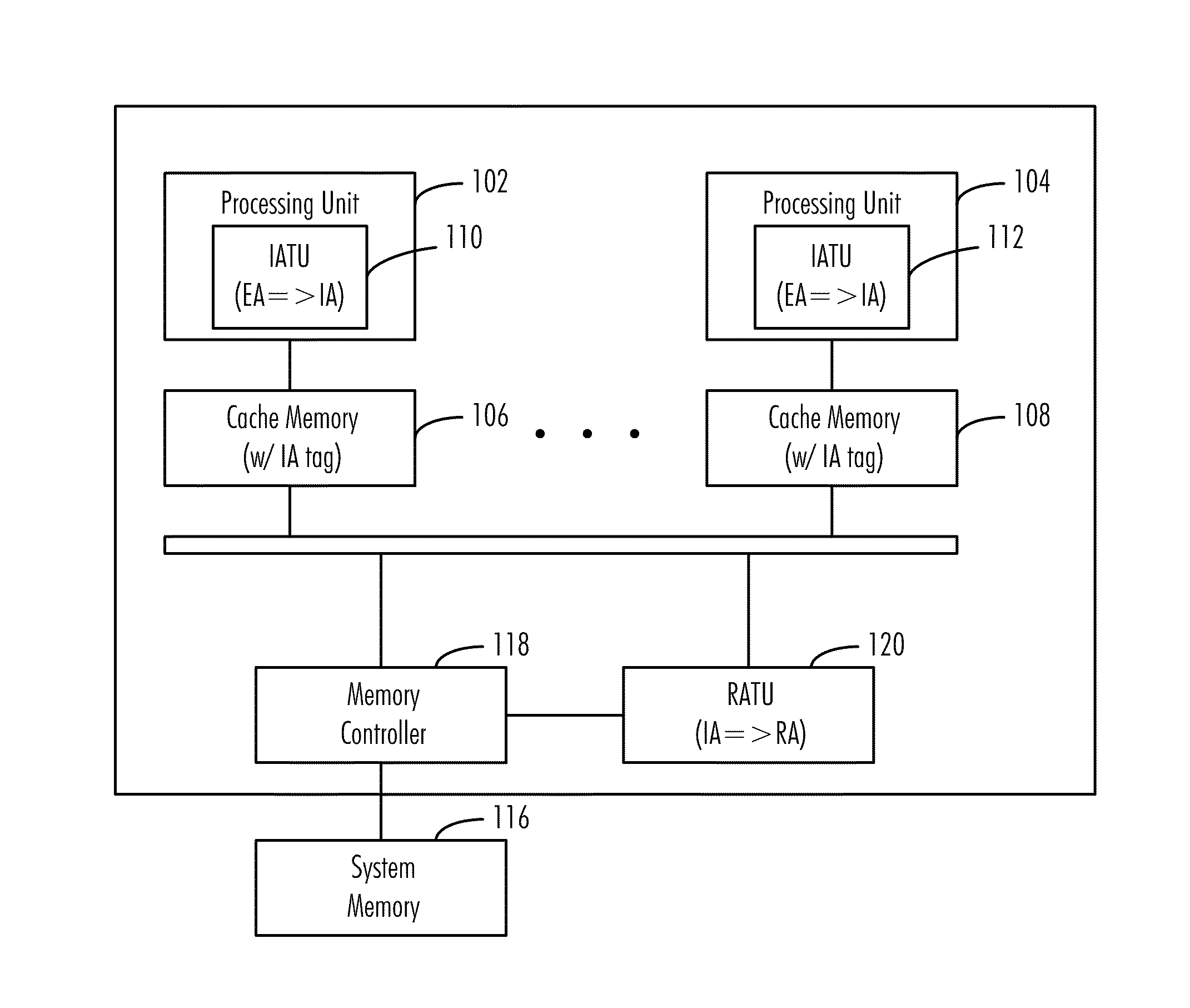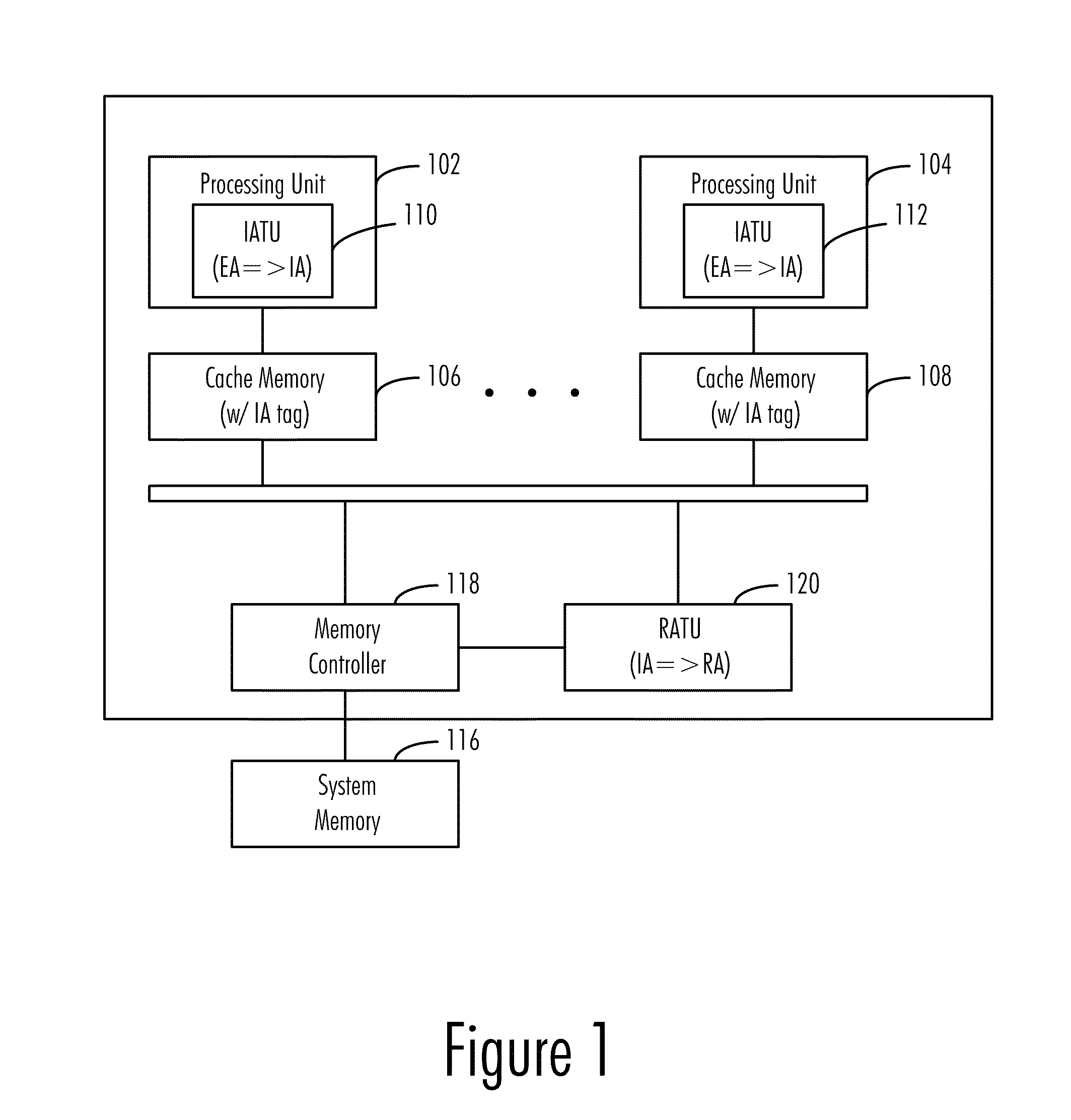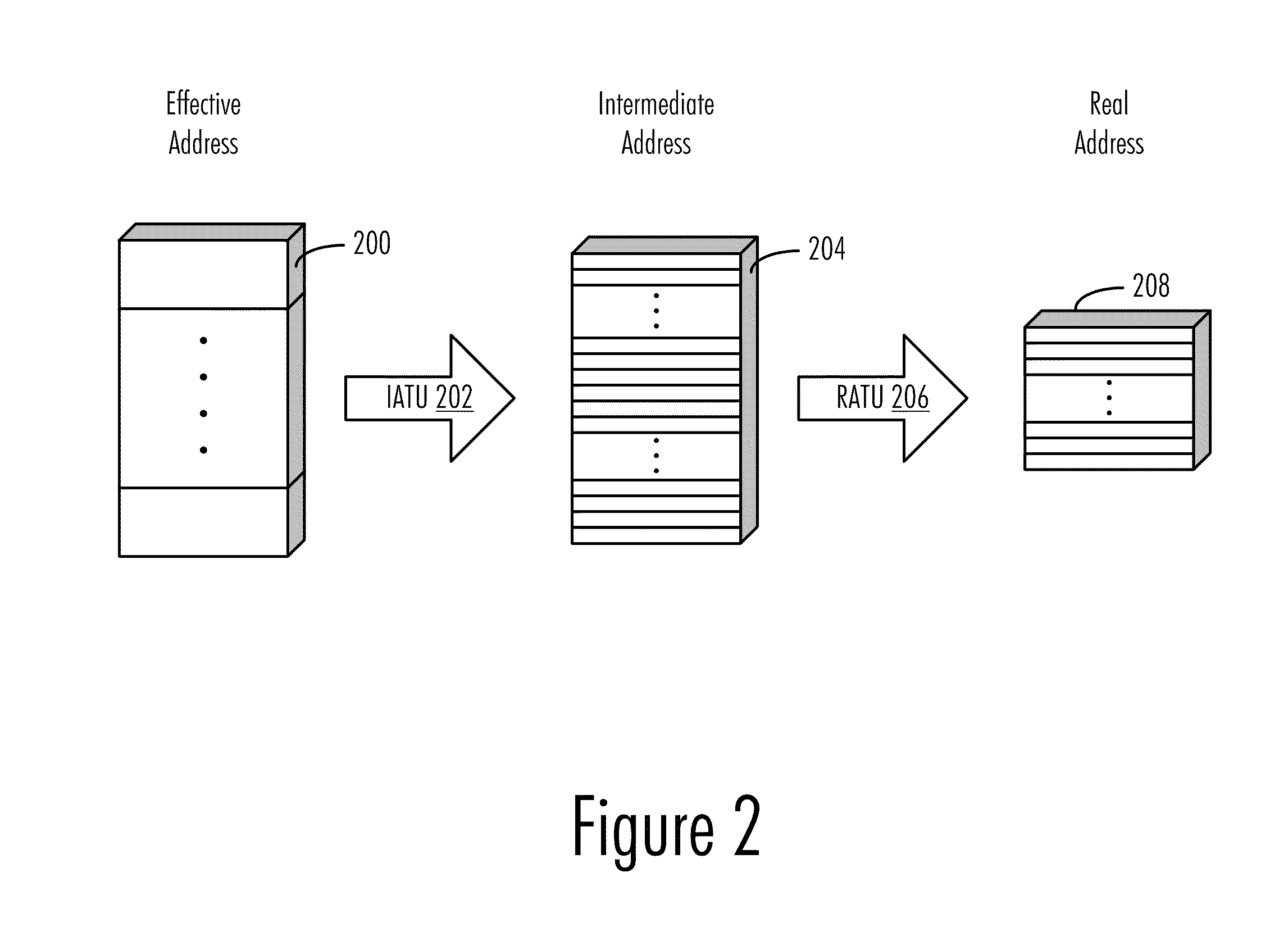Data Reorganization through Hardware-Supported Intermediate Addresses
a technology of data reorganization and hardware support, applied in the field of memory systems, can solve the problems of cache hit and cache miss, and achieve the effect of improving the performance and efficiency of memory access and more efficient caching/access
- Summary
- Abstract
- Description
- Claims
- Application Information
AI Technical Summary
Benefits of technology
Problems solved by technology
Method used
Image
Examples
Embodiment Construction
[0013]The following is intended to provide a detailed description of an example of the invention and should not be taken to be limiting of the invention itself. Rather, any number of variations may fall within the scope of the invention, which is defined in the claims following the description.
[0014]FIG. 1 is a block diagram of a data processing system 100 in accordance with a preferred embodiment of the present invention. Data processing system 100, here shown in a symmetric multiprocessor configuration (as will be recognized by the skilled artisan, other single-processor and multiprocessor arrangements are also possible), comprises a plurality of processing units 102 and 104, which provide the arithmetic, logic, and control-flow functionality to the machine and which share use of the main physical memory (116) of the machine through a common system bus 114. Processing units 102 and 104 may also contain one or more levels of on-board cache memory, as is common practice in present d...
PUM
 Login to View More
Login to View More Abstract
Description
Claims
Application Information
 Login to View More
Login to View More - R&D
- Intellectual Property
- Life Sciences
- Materials
- Tech Scout
- Unparalleled Data Quality
- Higher Quality Content
- 60% Fewer Hallucinations
Browse by: Latest US Patents, China's latest patents, Technical Efficacy Thesaurus, Application Domain, Technology Topic, Popular Technical Reports.
© 2025 PatSnap. All rights reserved.Legal|Privacy policy|Modern Slavery Act Transparency Statement|Sitemap|About US| Contact US: help@patsnap.com



